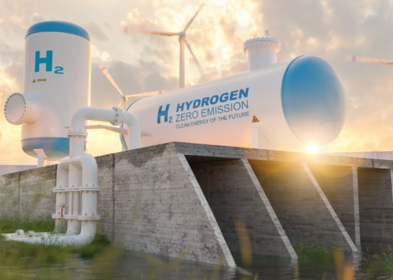
09/03/2023
Hydrogen, the Italian supply chain is growing. Investments and patents increase
Simonluca Pini - Contributing Editor Sole 24 Ore
Italian companies believe more and more in hydrogen, as underlined by a research carried out by the Studies and Research Department of Intesa Sanpaolo in collaboration with H2IT, the Italian Hydrogen and Fuel Cells Association
Reducing carbon dioxide emissions by 55% by 2030 and reaching zero impact by 2050. The European Union, with the Green Deal, has imposed very challenging energy transition objectives which require and will increasingly require a radical transformation of mobility and its main protagonists. In addition to electric motors, alternative fuels such as hydrogen could be the right answer in various areas, provided there is significant growth in infrastructure and technology. As underlined by the second edition of the H2IT Observatory, created by the Studies and Research Department and the Innovation Center of Intesa Sanpaolo, 65% of companies closed 2022 with an increase in investments. 70% of these are financed through own funds, while 22% is covered by European, national or regional funds. In the Italian NRPP (National Recovery and Resilience Plan) 3.64 billion euros have been allocated precisely to develop the hydrogen supply chain in Italy, but it is above all private investments that are driving growth. Another interesting aspect comes from innovation: according to the International Energy Agency, Italy is the fifth country in the European Union for the number of patents related to hydrogen and in the last five years over 1 company out of 3 has obtained at least one patent or is about to do so. The percentage rises from 36% to 85% for companies that deal with production. According to the companies interviewed by the study, the greatest growth rates between now and 2030 will be in mobility (85%), those linked to the hard-to-abbot (Chemicals, Cement, Integrated Cycle Steel, Electric furnace steel, Paper , Ceramics, Glass and Foundries) and renewable electricity storage (55%).
The European scenario between road and rail transport
The number of means of transport powered by hydrogen, in recent years, is growing both in road and rail transport. The positive European trend of 2020 continued also in 2021, with an increase in new registrations of hydrogen vehicles of +22% compared to 2020. Germany is in the lead, which recorded a +70%, followed by the Netherlands and Switzerland.
Globally, the major producers of hydrogen cars are South Korea and Japan. In Italy, the lack of an adequate network of filling stations has severely limited the growth of the market. Precisely for this reason, within the 3.64 billion provided for the hydrogen supply chain in the NRPP, 530 million euros are dedicated to supporting the construction of stations for road transport (230 million, 40 stations) and railways (300 million for 10 stations) by 2026. In particular, for heavy road transport, as specified in the Preliminary Guidelines of the Italian Hydrogen Strategy of the former Italian Ministry of Italian Ministry of Enterprises and Made in Italy, the goal is to make 2% of the national fleet of long-haul trucks fueled by hydrogen by 2030, thus also paving the way for the development of light hydrogen mobility. In the railway sector, on the other hand, hydrogen can support the goal of making non-electrified lines (about 30%, 4,670 km) independent of fossil fuels. These are targets that require public investment, but also private investment by companies that are increasingly interested in the growth of hydrogen.
Image credits: https://rcphotostock.com <https://rcphotostock.com/> – © rcphotostock (22097)
The European scenario between road and rail transport
The number of means of transport powered by hydrogen, in recent years, is growing both in road and rail transport. The positive European trend of 2020 continued also in 2021, with an increase in new registrations of hydrogen vehicles of +22% compared to 2020. Germany is in the lead, which recorded a +70%, followed by the Netherlands and Switzerland.
Globally, the major producers of hydrogen cars are South Korea and Japan. In Italy, the lack of an adequate network of filling stations has severely limited the growth of the market. Precisely for this reason, within the 3.64 billion provided for the hydrogen supply chain in the NRPP, 530 million euros are dedicated to supporting the construction of stations for road transport (230 million, 40 stations) and railways (300 million for 10 stations) by 2026. In particular, for heavy road transport, as specified in the Preliminary Guidelines of the Italian Hydrogen Strategy of the former Italian Ministry of Italian Ministry of Enterprises and Made in Italy, the goal is to make 2% of the national fleet of long-haul trucks fueled by hydrogen by 2030, thus also paving the way for the development of light hydrogen mobility. In the railway sector, on the other hand, hydrogen can support the goal of making non-electrified lines (about 30%, 4,670 km) independent of fossil fuels. These are targets that require public investment, but also private investment by companies that are increasingly interested in the growth of hydrogen.
Image credits: https://rcphotostock.com <https://rcphotostock.com/> – © rcphotostock (22097)






